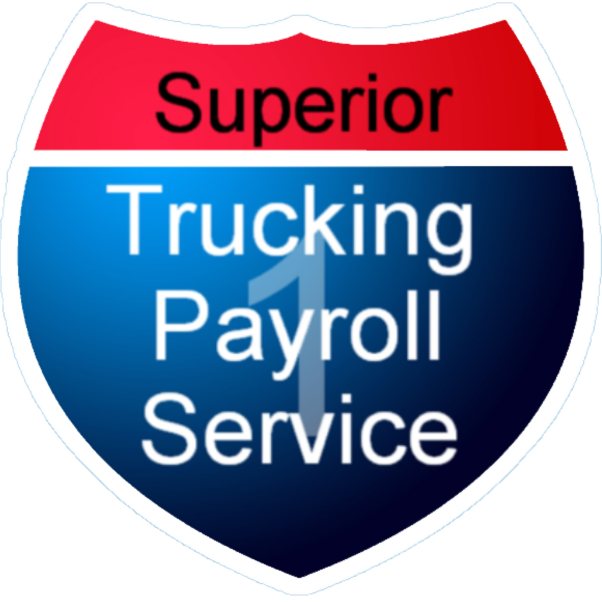Hiring drivers in the trucking industry can be tricky, especially when deciding if they should be paid as W2 employees or 1099 contractors. Misclassification can lead to severe financial and legal repercussions. You might even be wondering, “Is it legal to 1099 a truck driver?”
At Superior Trucking Payroll Service, we specialize in helping trucking companies navigate these complex issues. As the first and only payroll service in the US to specifically focus on trucking, we know how overwhelming it can be to deal with these complex issues.
In this article, we will provide you with clear, easy-to-follow information to make the best choices for your business and avoid costly mistakes.
Disclaimer: Always consult with a legal or tax professional before making any decisions. Remember that government agencies are continually changing policies. This is accurate information as of 08/08/2024.

Are Your Truck Drivers Employees or Contractors?
One of the biggest and most important decisions you will make for your trucking company is if your drivers are employees or contractors. Make sure you understand the Pros and Cons of hiring both W2 employees and 1099 contractors. In this article, we will help you understand if it is legal to 1099 a truck driver and the different tests to use to correctly classify your truck drivers.
What are the Tests used to Classify Truck Drivers?
Three tests help determine if a driver is an employee or a contractor. These tests look at different aspects of the working relationship to make sure the classification is correct. They all work in similar ways.
Understanding the Common Test for Driver Classification
The Common Test looks at three main areas to determine worker status. It is used by the IRS, New York, the District of Columbia, and 17 other states.
It’s key points include:
-
Behavioral:
Does your company control how the work is done? For example, if you hire a painter, you don't tell them how to paint.
-
Financial:
Does your company control all the money needed for the job? If you own the truck and pay for maintenance and fuel, the driver is a W2 employee.
-
Relationship:
Is the worker doing a key part of your business for a long time? If so, they are likely employees. For example, painters are contractors because they do one job and leave.
The IRS 20 Factor Test: How It Determines Driver Status
The IRS 20 Factor Test is similar to the Common Test, it measures how much control you have over the worker.
Key points for trucking companies include:
-
Furnishing Tools and Equipment:
Who owns the truck and pays to maintain it?
-
Significant Investment:
Who owns the truck?
-
Profits and Loss:
Can the driver make more money by working more efficiently?
What is the ABC Test and How It Applies to Trucking
The ABC Test is stricter, especially for trucking companies with owner-operators. This is used in some states to determine state unemployment tax.
This test includes three parts and the driver must satisfy all three:
-
Absence of Control:
Do you control how the worker does their job?
-
Business of The Worker:
Does the worker do the main business of the company? In many states, truck drivers are employees because driving is the main business of the trucking company.
-
Customarily Engaged:
Is the worker typically seen as an independent contractor in the industry?
What test should I follow to legally classify my truck drivers?
According to the IRS, “There is no “magic” or set number of factors that “makes” the worker an employee or an independent contractor, and no one factor stands alone in making this determination.”
Currently, each state has its own adopted test to determine worker status. About half of the states use the common law, and the other half use the ABC test. If you are in an ABC state, that test will be stricter than the IRS test. Some states only follow parts of the ABC test, making it easier to hire owner-operators. Check the laws in your state to be sure you are using the right test or click here to see the list we have compiled for you.
Want to make sure you are classifying correctly? Always make your truck drivers employees and pay them W2
What is the Cost of Paying Truck Drivers as W-2 Employees?
When you have W2 employees, you must pay payroll taxes. Let’s look at what those taxes are:
-
Social Security/Medicare (FICA):
7.65% of the first $168,600 in wages per year (as of 2024).
-
Federal Unemployment (FUTA):
0.6% of the first $7,000 in wages per year.
-
State Unemployment (SUTA):
varies by state
In addition to payroll taxes, you may need to provide benefits such as health insurance, retirement plans, and paid time off. These benefits can add to your overall costs but are essential for keeping your drivers happy and healthy.
Using a per diem program can help reduce your tax liability. A program like this allows you to make part of your driver’s wage non-taxed. This reimbursement is then used for meals and other expenses when they are on the road. It’s a great way for your company to save money and increase the drivers’ take-home pay.
Switching from 1099 to W2 is a sensitive subject for most drivers. It’s important to make an informed decision and be ready to answer many questions. Find a trustworthy payroll service that knows trucking to guide you through the process.
Legal Ramifications of Misclassifying Truck Drivers
Misclassifying a driver can lead to severe tax penalties, which may exceed the worker’s salary and potentially bankrupt your business.
Here are the main risks:
-
Tax Penalties:
Misclassifying an employee can lead to many IRS penalties, including criminal penalties.
-
Workers Compensation Penalties:
If a W2 worker gets hurt and you don’t have Workers Compensation Insurance, you will pay their hospital bills and face penalties. For example, in Michigan, the fine is $1,000 per employee, per day.
-
Labor Law Violations:
Having 50 or more W2 employees means you must provide health insurance.
-
Legal Fees:
Lawyers are expensive and this will be a long process if you are caught misclassifying your drivers.
Final Thoughts on Truck Driver Classification
Deciding whether to classify your truck drivers as W2 employees or 1099 contractors can significantly impact your business. If you are unsure, always err on the side of caution and classify them as W2 employees.
If a driver should be an employee, they CANNOT choose to be a contractor, even if they want to. If a driver insists on being a 1099 contractor, it’s a red flag and might indicate they are hiding something illegal.
Additionally, if the driver is angered, they can change their mind about that classification they agreed to. They could file an SS-8 with the IRS. This “Determination of Worker Status” will trigger the IRS to investigate how your company has classified its drivers. This can ultimately get your company in trouble if you have been paying and treating your drivers as contractors when they should be W2 employees.
At Superior Trucking Payroll Service, we specialize in helping trucking companies navigate these complex issues. We understand the challenges you face and are here to provide you with the knowledge and tools you need to make informed decisions.
Remember, always talk to a legal or tax professional before making any final decisions.

Written by Mike Ritzema
With over 20 years of experience in entrepreneurship, management, business planning, financial analysis, software engineering, operations, and decision analysis, Mike has the breadth of knowledge and depth of experience needed to quickly understand entrepreneurs’ businesses and craft the most suitable solutions.



